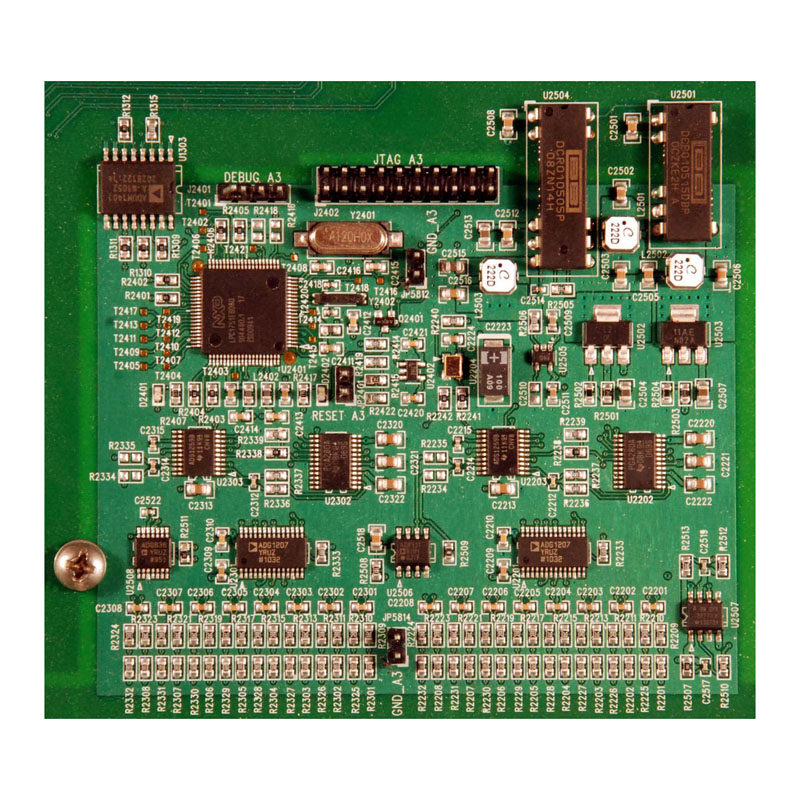Design Note #89
Twenty four bit analog to digital signal conversion provides remarkable accuracy when digitizing processes in our analog world. The ability to sample multiple, independent analog channels permits the digitization of our physical world on a large scale. Achieving true channel accuracy means keeping channel-to-channel signal cross talk, and self-generated channel noise to an absolute minimum. Amplifier drift, differential signal quality, output offset, and amplifier input current considerations all factor into design decisions. Careful circuit board layout practice is the stroke that makes real. OTEC’s latest high precision multi-channel analog conversion design provides superior analog to digital conversion results.
Careful selection of analog components requires experience. Input multiplexors, input hold amplifiers, filter stages, gain stages, voltage references, and conversion stages each must be considered. System design often requires making design trade-offs. Bipolar amplification circuitry allows precision operation through the zero crossing point. Attention to routing details isolates noise generators from conversion circuitry. Common mode noise attenuation and virtual grounding techniques correctly applied keep conversion input signal quality pure.
Conversion gain and input sequencing are controlled by an embedded ARM processor. Output communications, conversion setup and programming are updated dynamically. Conversion outputs are available in a variety of formats including USB, Ethernet, CAN, HDLC, IIC, SPI, and UART.
The development of custom electronic products for our OEM clients is OTEC’s entire business. The design of custom electronic products with rapid design cycles, demanding technical requirements, and unforgiving schedules sets us apart.
